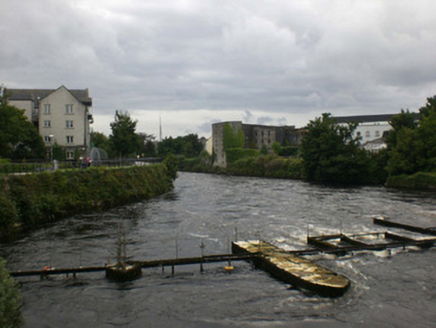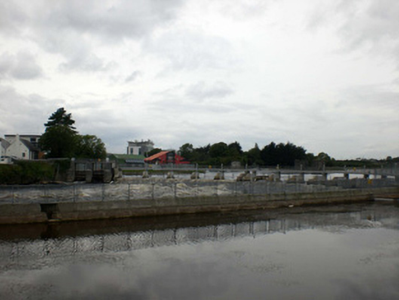Survey Data
Reg No
30319001
Rating
Regional
Categories of Special Interest
Architectural, Technical
Original Use
Harbour/dock/port
Date
1730 - 1770
Coordinates
129571, 225193
Date Recorded
18/09/2008
Date Updated
--/--/--
Description
Banks of Lower Corrib River, canalised c.1750, following relatively straight course from Salmon Weir, southwards into Galway Bay. Three bridges cross this section of river, Salmon Weir Bridge, William O'Brien Bridge and Wolfe Tone Bridge. Banks consist of mixture of stone rubble and limestone blockwork lining with several tributaries to western bank from mill races and Eglinton Canal at southern end of river. Also mill races to eastern bank north of William O’Brien Bridge. Mill races feeding into river enter it either via stone block construction weirs with remains of cast-iron fixings from now absent sluice mechanisms or through stone-lined channels, quality of which varies between finely constructed ashlar lining and rougher rubble and mortar work. Many mills associated with these races still stand and mainly concentrated on western bank where they are built right on river edge with walls acting as part of raised embankments which line length of river to protect against flooding. Other large feature of Lower Corrib is salmon trap comprising concrete piers with metal salmons traps between them.
Appraisal
Modified during the mid-eighteenth century as part of the 'Drainage and navigations scheme of Loughs Carra, Corrib and Mask', the waterway of the Lower Corrib, also known as the 'Long Walk', was formerly the main artery for trade and maritime commerce in Galway City. Interesting features include the salmon traps, various mill races and mills along the river, with the city's key bridges across it.



